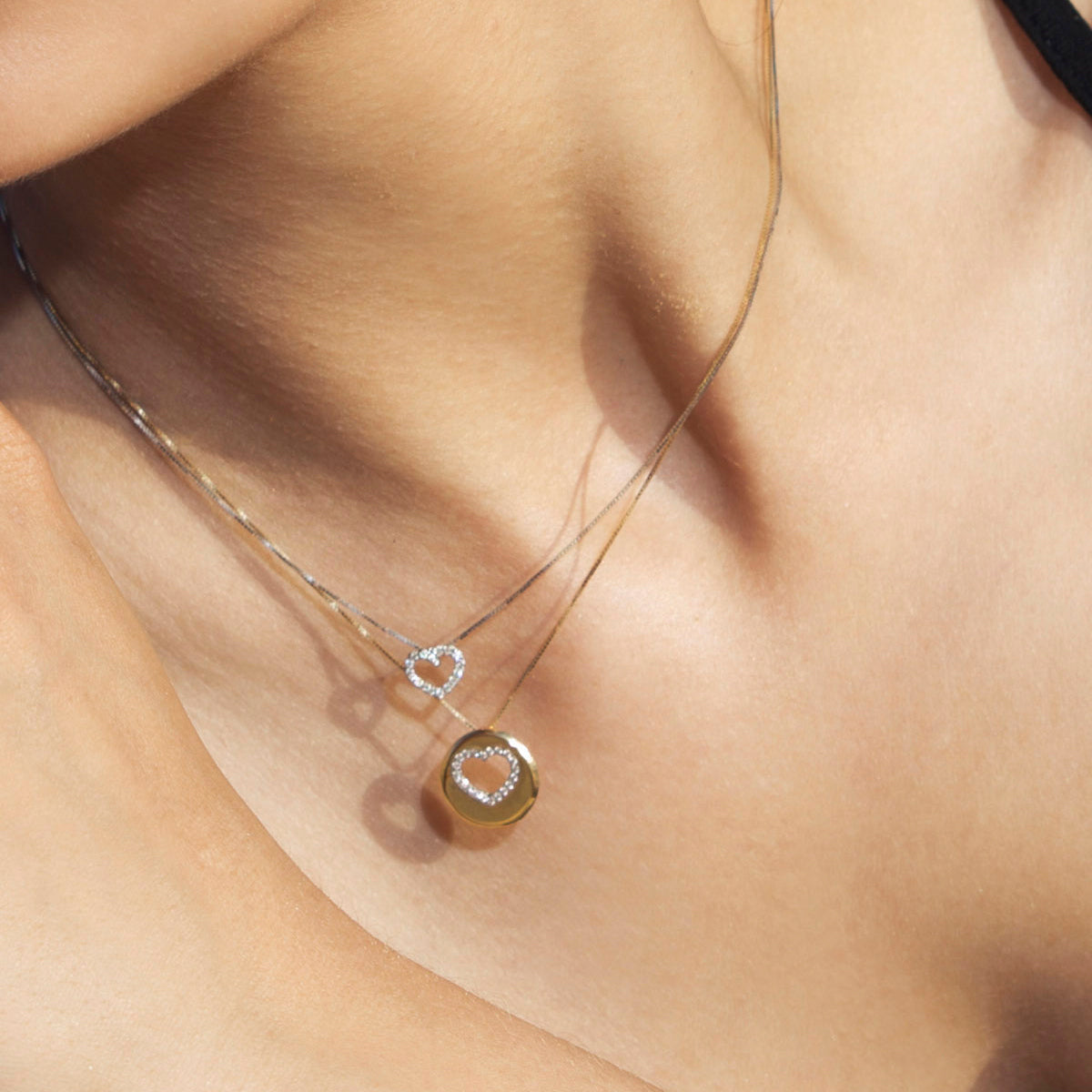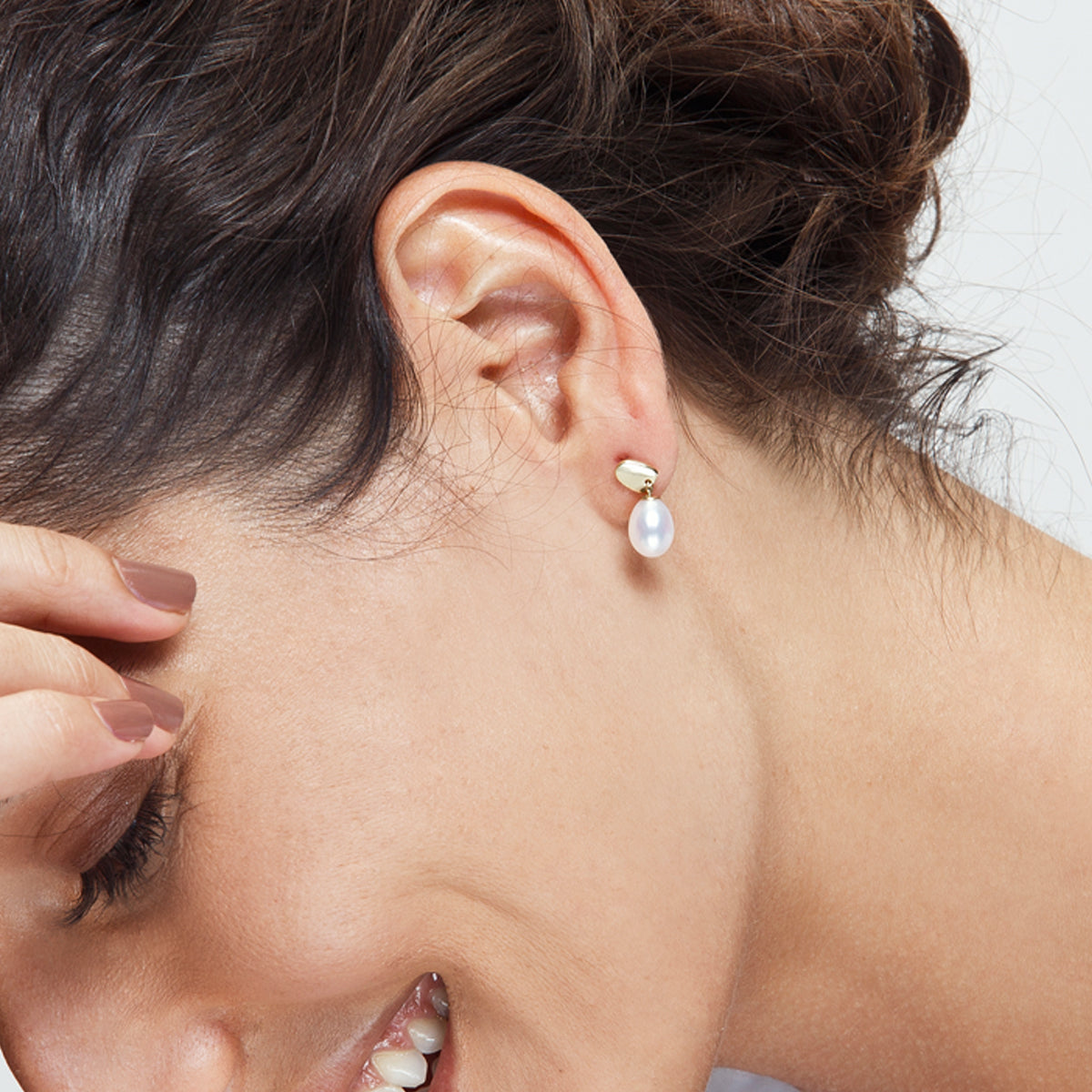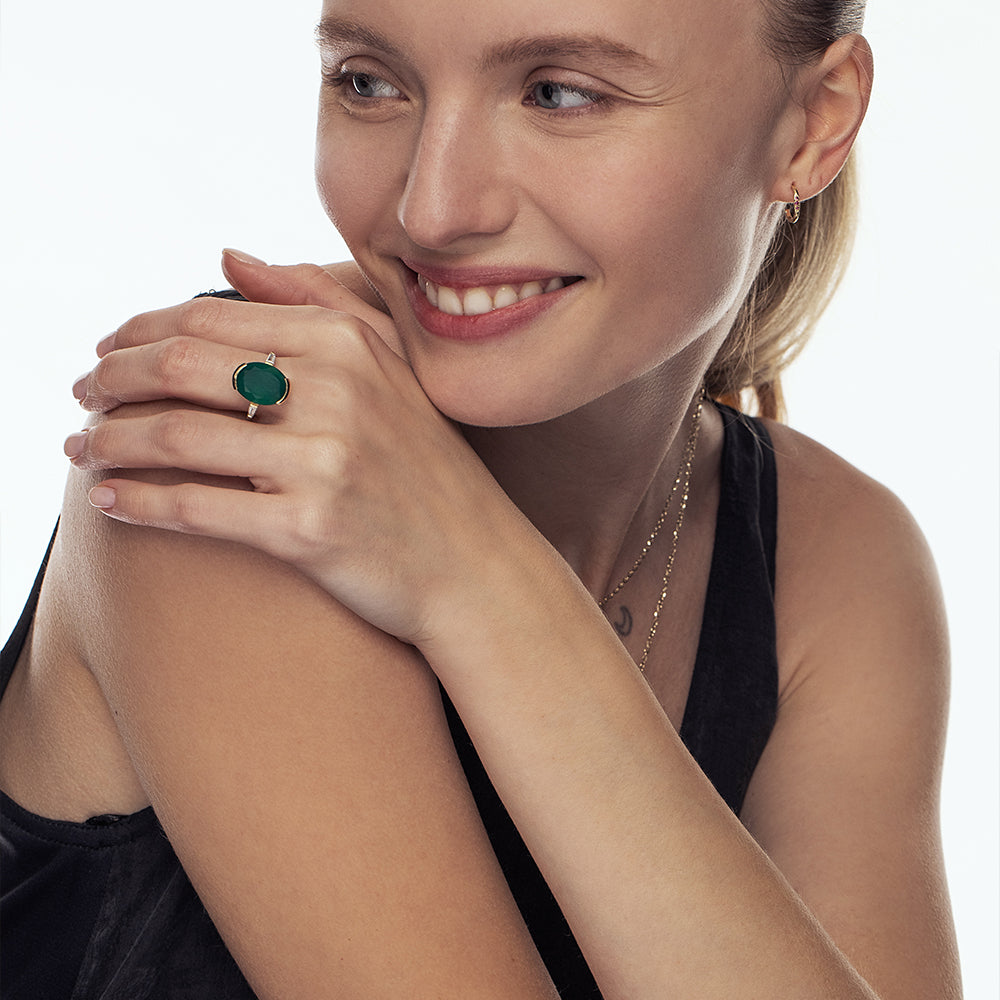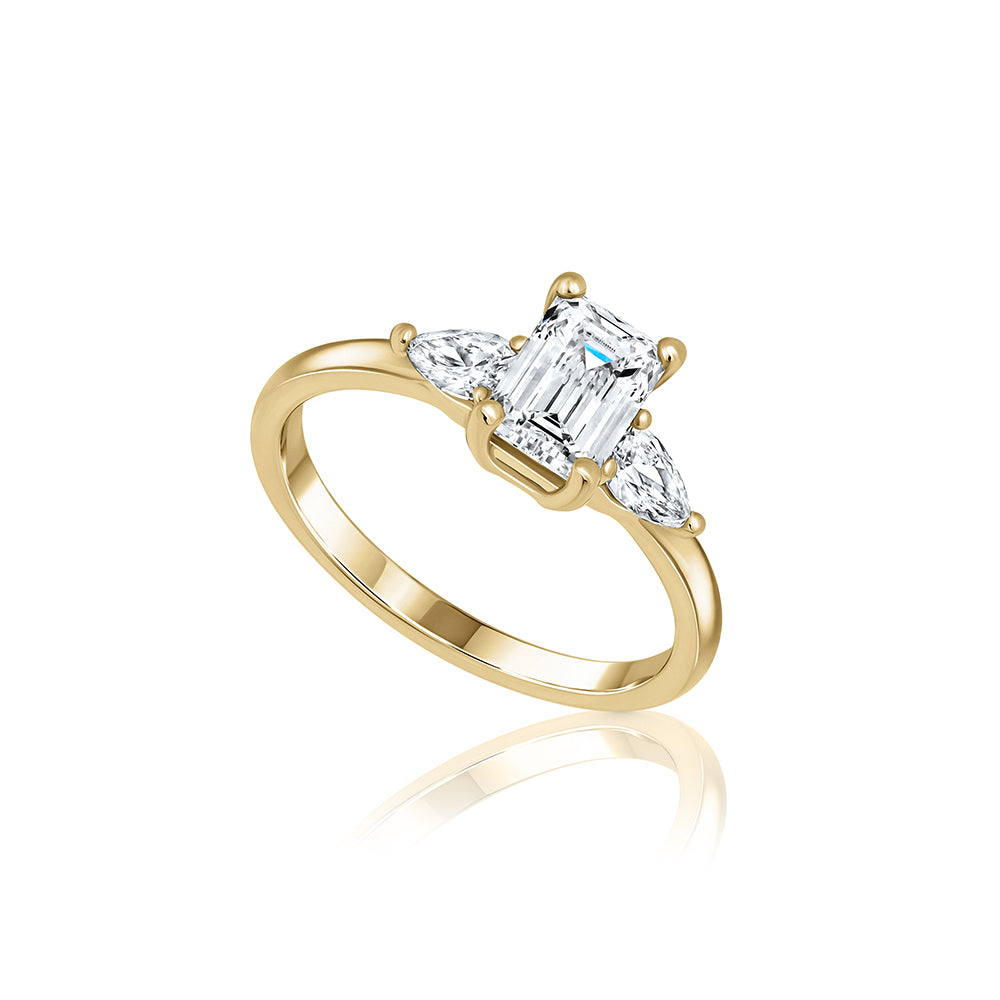What is the difference between diamonds and zircons?
Of course, choosing zircon is legitimate and possible. Not every customer sees the difference, and if the budget is limited, this is indeed a good option for reducing the cost of the jewelry.
What is a diamond?
Diamond has physical characteristics that distinguish it from other materials in nature:
- Diamond is the hardest substance in nature (hardness level 10), and therefore serves as a benchmark of hardness for other materials.
- Diamond is composed entirely of one element, carbon, unlike most other materials, which are composed of multiple elements.
- The bond between its atoms is called a covalent bond, which is the strongest physical bond between atoms themselves.
- Its special molecular shape (it comes in the shape of a cube or an octagon) results in complete transparency in its natural form.
- You can find transparent diamonds, or colored diamonds. The color of a diamond occurs for two reasons. The first is that during its formation, additional elements penetrated and changed its color. The second is that defects in the shape of the diamond change the refraction of light and its color visible to our eyes.
Can a diamond break?
Yes. Diamonds contain cleavage directions and therefore, if a lot of force is applied in these specific directions, the diamond may break and even explode when a lot of force is applied. Don't worry, if the ring falls on the floor, the diamond will not break.
What is zircon?
Zircon is a mineral that crystallizes naturally within the Earth (like diamond) without human intervention, and its external form is almost identical to it. Zircon is composed of three elements - zirconium, silica, and oxygen. Its hardness is 9.25, and its transparency can reach that of diamond.
Zircon is mined in many countries around the world, including the United States, Russia, Italy, India, and Norway. Zircon is used in many industries because of its high durability and unique properties. It is also used for dating because the mineral contains uranium and thorium.
Zircon is not zirconia and is not a fake diamond
It is important to know that zircon is not related to zirconia, despite the similar names. Zirconia is a glass-like material, produced in a laboratory, and is a cheap substitute for diamond. Zirconia is also not a fake diamond. Fake diamonds are produced in a laboratory, have the same chemical and physical composition as natural diamonds, and cost about 20-30 percent less.
Zircon and diamond have similar properties such as transparency and the effect of sparkle, diamond is considered the hardest mineral.
What is the difference between diamond and zircon?
- Hardness level – Diamond has a hardness level of 10, while zircon is 9.25. This means that a piece of jewelry set with zircon may scratch slightly more than a diamond.
- Clarity – Because zircon undergoes strict controlled and monitored mining processes, its clarity may be better than that of diamond.
- Color – The color of the zircon (greenish, gray, yellowish) may be more pronounced, and therefore often resembles low-quality diamonds.
- Refractive Index – Diamond has a refractive index of 2.41, while zircon has a refractive index of 2.65-2.69. The refractive index is a physical property of a transparent material, indicating the speed at which light passes through the material. The higher the refractive index, the more sparkling the material. This means that diamond pendants will sparkle slightly less than zircon pendants.
How do you actually distinguish between a diamond and a zircon?
With the naked eye, it is very difficult to find the differences between a diamond and a zircon. Therefore, it is advisable to buy designer jewelry in a neat and reliable place, which provides recognized certificates about the stone and its weight. If you want to try to distinguish yourself between diamond pendants and zircon pendants – take a magnifying glass and look closely at the stone. If you see inclusions in it (visible irregularities) then it is a real diamond. Zircon, on the other hand, does not have inclusions.
However, the surest way to distinguish between diamonds and zircons is through a professional examination by an experienced jeweler. The examination also allows you to determine the value of a particular piece of jewelry, with designer jewelry set with diamonds being more expensive than jewelry with zircon.
Frequently Asked Questions
How do you know if the diamond is real?
There are several diamond identification methods used to determine whether a diamond is real or not, here are three common methods.
- The UV test, which involves illuminating the diamond with ultraviolet light . While the test is not always conclusive, and it depends on the type of diamond, gemologists can use the UV test to confirm whether the diamond is authentic or fake.
- Heat testing is also a great way to determine if a diamond is real. The test uses the physical and chemical properties of diamonds to distinguish between real and fake diamonds. It is important to clean the diamond thoroughly before testing. If the heat test result is positive, the diamond is real. If not, it is fake. However, diamonds and moissanite stones have high thermal conductivity, so it may be best to consult an expert.
- The scratch test was once a common method for determining the authenticity of a diamond. The test involves scratching the mirror with the gemstone. When the diamond is genuine, no scratches will appear, either on the stone or on the mirror.
What does a raw diamond look like compared to a polished diamond?
A rough diamond is an unpolished stone that has been mined directly from the earth. In contrast to the sparkling, brilliant appearance of a polished diamond, the appearance of a raw, natural diamond is often rough and looks like any ordinary stone in nature. However, upon closer inspection of the rough stone, the distinct crystal structure of diamonds (usually in the shape of an octahedron or tetrahedron) can be identified.
How do you distinguish between a diamond and a zirconia stone with the naked eye?
To quickly and with the naked eye identify that the stone you are examining is indeed a diamond and not zirconia, all you have to do is:
- Examine the light emanating from the stone.
- A diamond stone emits brilliant white light.
- Cubic zirconia emits a striking rainbow of colored light. The rainbow of colors looks more like moissanite, another alternative to diamonds.
- Check the weight of the stone. Diamonds are heavier than cubic zirconia stones, so when you place the diamond in your hand, try to feel if it is heavy.
- Examine the surface of the stone. If the stone is free of any inclusions or blemishes, it is likely to be zirconia and not a diamond. It is very rare to find diamonds that are completely free of blemishes. So if the stone is completely free of blemishes, it is probably not a real diamond, but zirconia.
- Look for scratches. If the gemstone has scratches, it is cubic zirconia. Diamonds are durable gemstones and will not scratch unless they are professionally cut.
How do you care for zirconia stones?
It is very important to care for zirconia to ensure it lasts, and care is quite simple. To clean the stone, use mild dish soap, warm water, and a soft toothbrush.
- Prepare a solution in a bowl containing a tablespoon of dish soap and warm water. Dip the zirconia-encrusted jewelry into the soap solution, making sure the stone is completely covered in liquid.
- Then, gently scrub the jewelry with the toothbrush to remove dirt and hard water stains.
- Once the stone is clean, rinse it with clean, cold water to remove any soap residue.
- Dry the jewelry with a clean, dry cloth.
Regular and careful cleaning of zirconia jewelry will help it last longer.
Are lab-grown diamonds the same as zirconia stones?
The short answer is, no! Cubic zirconia stones are synthetic, but they are not the same as lab-grown diamonds. The difference between these two types of gemstones lies in the fact that lab-grown diamonds are developed in a lab using a process that mimics their natural development over millions of years in the depths of the earth.
Zirconia stones, made of a glass-like material, are artificially created in a lab and are used as a cheap substitute for diamonds. Zirconia stones do not have the same chemical composition as lab-grown diamonds and are not as shiny and reflective as diamonds.
Both zirconia stones and lab-grown diamonds are sold at cheaper prices than natural diamonds.
The bottom line
To make an informed purchase, it is important to know that there are differences between zirconia and diamonds. Although jewelry with gemstones may be interesting and beautiful, diamonds retain their value and sparkle for a long time. If you are concerned about purchasing a piece of jewelry with a 'blood diamond', you can choose the gemstone that is right for you from a variety of jewelry set with spectacular lab-grown diamonds or zirconia stones. It depends on your budget.






